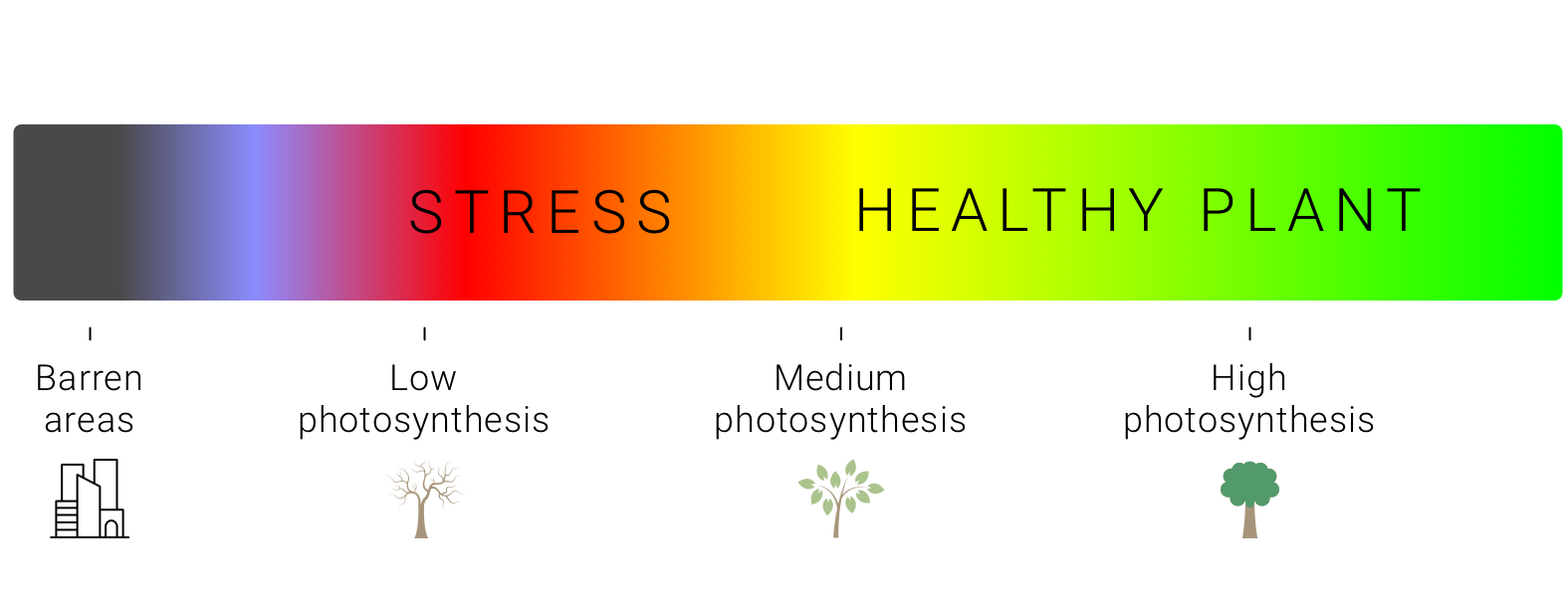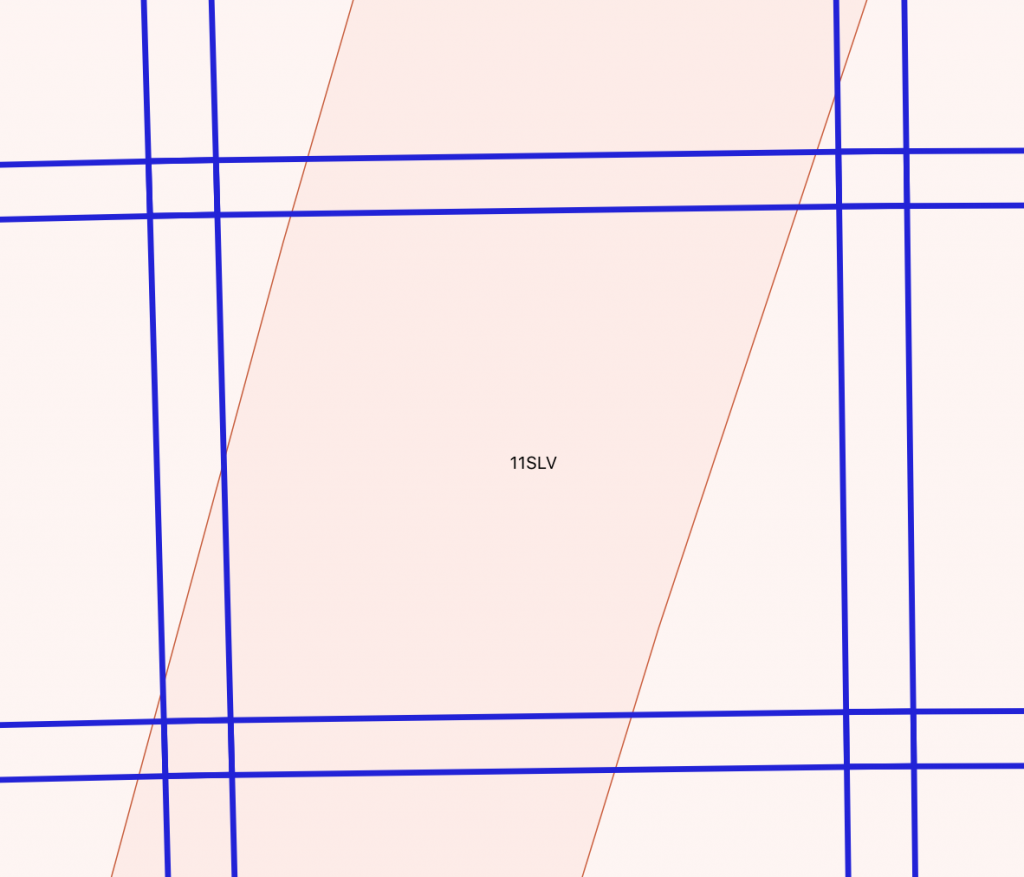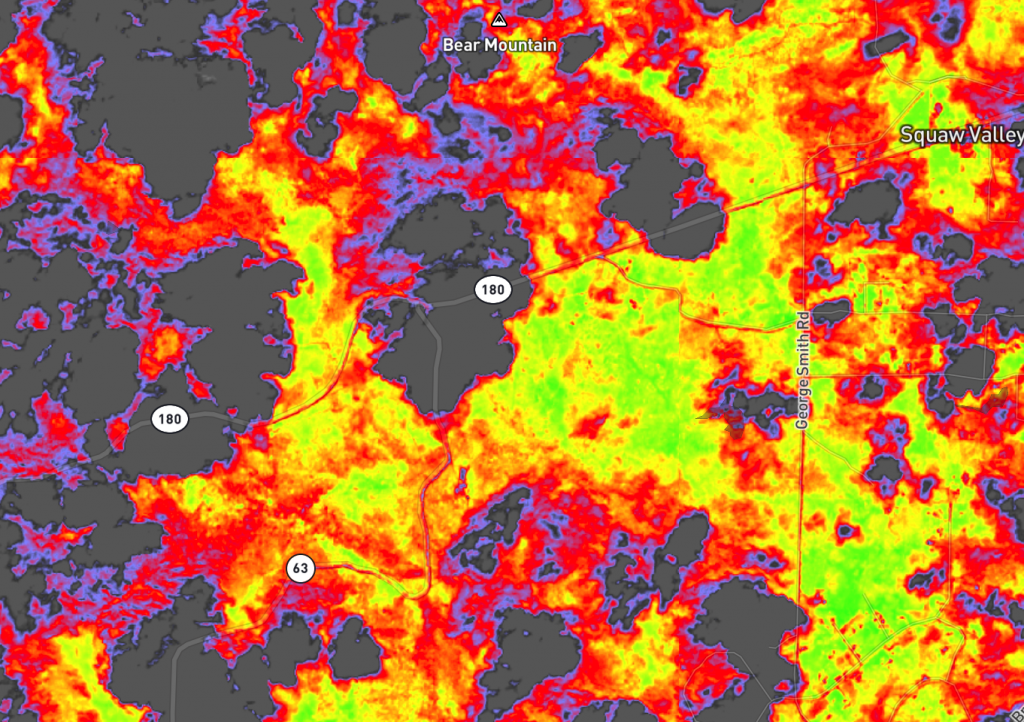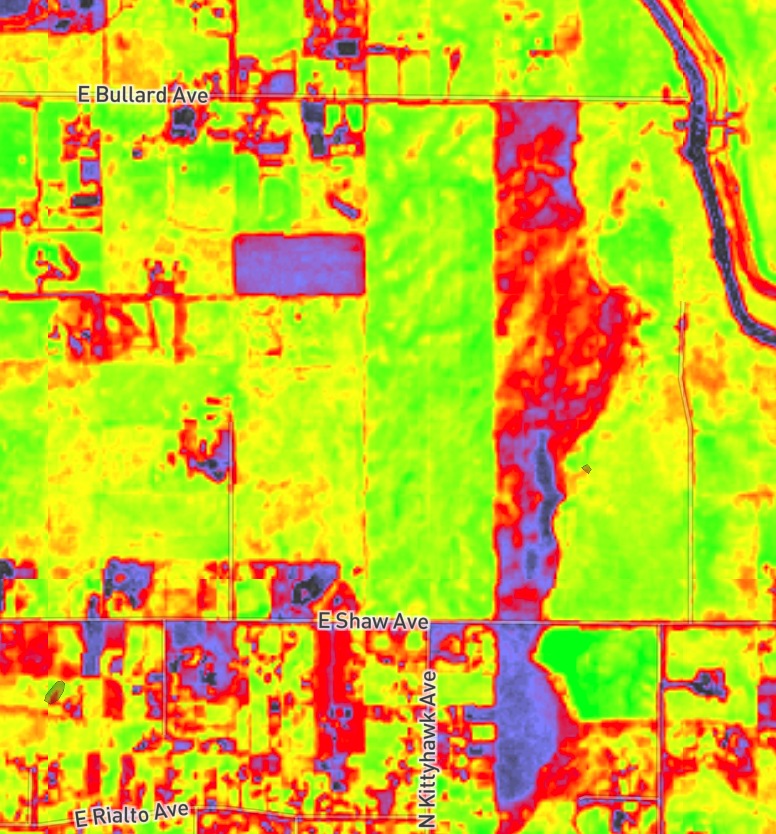NDVI FAQs
- NDVI stands for Normalized Difference Vegetation Index
- It quantifies vegetation by measuring the difference between near-infrared (which vegetation strongly reflects) and red light (which vegetation absorbs)
- Chlorophyll and photosynthesis cause light absorption in the red region of the spectrum
- The healthier the plant is, the higher the index is.

HOW TO READ THE MAP:
- The NDVI index is a value between -1 and 1.
- Anything below 0.2 has no vegetation. It can be water, snow, a road, bare soil, clouds, …
- The primary gradient of photosynthetic activity is from NDVI values from 0.2 to 0.9, and that is represented with a classic heat map from red to yellow to green.
- NDVI > 0.9 are colored magenta. Foliage generally does not have NDVI values this high. You should not see this color very often. It corresponds mostly to artifacts.
- The color legend is the same for all crop types, all soil types and all regions.

WHAT IT MEANS IN AG:
- NDVI values obtained with satellite data with high temporal resolution have a strong correlation with crop phenological stages (emerged, maturity, harvest). However, there are certain limitations. For instance, during the early stages of crop growth, when the green leaf area is small, NDVI results are very sensitive to soil background effects. The NDVI may also saturate at later stages, when the crops reach canopy closure, and produce inaccurate results.
- Crop type, crop age, row width will have an impact on the color you see on the map. Your grower could have a field that shows up mostly as dark orange for a field with healty 1st year leaf trees.
- This also means the NDVI will vary throughout the season.
- Don’t forget the image comes from a satellite, not a fly by. Resolution of the images is not as good at what paid services like Ceres offer. Our product gives a general information of the health of a field. They will not be able to detect if a line is leaking or to analyse the health of a single tree. But it gives us a view of the rest of the field where we do not have a tension sensor.
- NDVI will let us know about the health of a crop. But as you know, ag is complex. A low NDVI does not mean it is caused by wrongful irrigation. Could be related to many other variables.
Resolution of the image is 10m per pixel (33 ft)
Sentinel-2 (https://www.esa.int/)
- A satellite passes over North America every other day.
- Every night we query the Sentinel server and download all images with a cloud cover less than 20% and a data coverage of over 90%. Thus, refresh rate will vary depending on the weather. For places like California, in the summer, we should have fresh data at least once a week.
The NDVI map is a mosaic of multiple images. Depending on the weather, each image may have been taken at a different date.
WEB: The date displayed at the bottom of the screen is the one of the image pointed by your mouse.
MOBILE: The date displayed at the bottom of the screen is the one of the image at the center of your map view.
iPAD: Click on the map to display the date in a tooltip at the bottom of the map.
- Images are taken after the fact. Make sure you look at past tension data when analyzing an NDVI map. The impact of high tension may take a while to be noticeable on an NDVI map.
- NDVI will let us know about the health of a crop. But as you know, agriculture is complex. Water is not the only variables at play in the health of a plan.
- NDVI values obtained with satellite data with high temporal resolution have a strong correlation with crop phenological stages (emerged, maturity, harvest). However, there are certain limitations. The NDVI may saturate at later stages, when the crops reach canopy closure, and produce inaccurate results.
- Crop type, crop age, row width will have an impact on the color you see on the map. Your grower could have a field that shows up mostly as dark orange for a field with healty 1st year leaf trees.
- This also means the NDVI will vary throughout the season.
- NDVI values obtained with satellite data with high temporal resolution have a strong correlation with crop phenological stages (emerged, maturity, harvest). However, there are certain limitations. For instance, during the early stages of crop growth, when the green leaf area is small, NDVI results are very sensitive to soil background effects. The NDVI may also saturate at later stages, when the crops reach canopy closure, and produce inaccurate results.
- Crop type, crop age, row width will have an impact on the color you see on the map. Your grower could have a field that shows up mostly as dark orange for a field with healty 1st year leaf trees.
- This also means the NDVI will vary throughout the season.
- NDVI will let us know about the health of a crop. But as you know, agriculture is complex. A low NDVI does not mean it is caused by wrongful irrigation. It could be related to many other variables.
Each Military Grid Reference System (MGRS) tile can be visited from multiple relative orbits, with a potentially different coverage of the MGRS tile.


Clouds.
Images are taken by a satellite so parts might be covered by clouds.

Clouds.
Images are taken by a satellite so parts might be covered by clouds of various density.

Yes, some types of products applied on leaves, such as Kaolin clay, can have an effect on the NDVI. In most cases, this will lower the level of reflectance. In other word, the color of the NDVI map will lean towards the red side of the spectrum.

